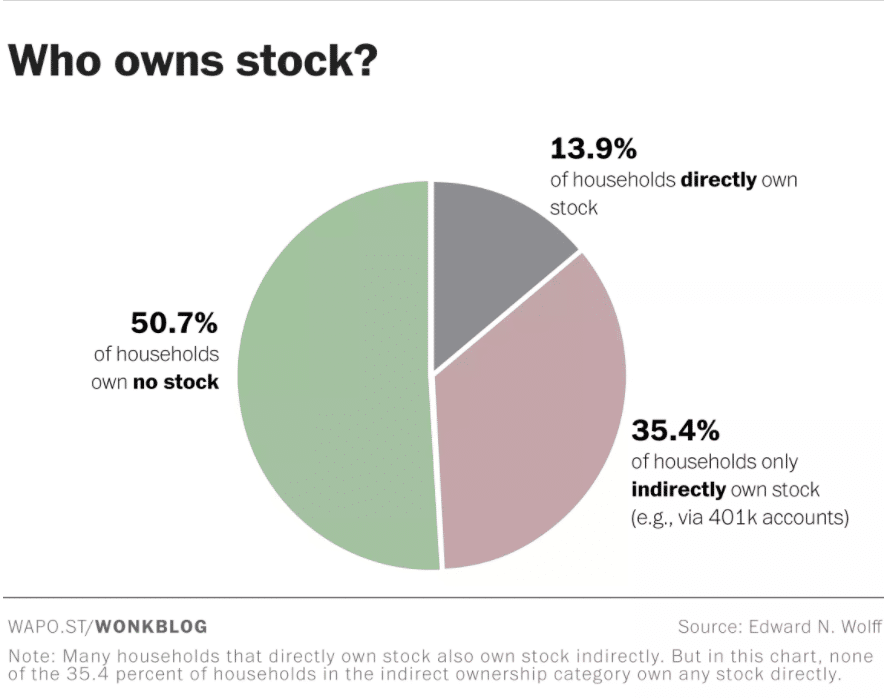Investing in stocks has always been an exhilarating endeavor. The potential for substantial returns, the thrill of market fluctuations, and the opportunity to build wealth are just some of the reasons why people are drawn to this dynamic field.
While many investors focus on high-priced stocks, there is a whole world of opportunities waiting to be explored with stocks under $70.
The Appeal of Investing in Stocks
Investing in stocks offers unparalleled growth potential compared to other assets like real estate or bonds. When you invest in a company’s stock, you become a partial owner and benefit directly from its success.
Moreover, investing in stocks allows individuals to participate in the growth of industries they believe in, such as technology, healthcare, or renewable energy. This diversification helps mitigate risk by spreading investments across different sectors.
Overall, investing in stocks provides an enticing opportunity for financial growth and the chance to support companies shaping the future.
Exploring the Opportunities with Stocks Under $70
When it comes to investing, high-priced stocks often steal the spotlight. However, there is a world of untapped potential hidden within low-priced stocks under $70.
These stocks tend to fly under the radar of institutional investors and Wall Street analysts, creating unique opportunities for individual investors to uncover hidden gems before they gain widespread attention.
One significant advantage of low-priced stocks is their potential for substantial returns. By entering promising companies at an early stage, investors position themselves for significant gains as these companies grow and mature over time.
While high-priced stocks may seem like the obvious choice for those seeking significant returns, it’s important not to overlook the potential of lower-priced options.
The key to success in investing in stocks under $70 lies in careful research and analysis. As individual investors delve into these undervalued companies, they have the opportunity to identify hidden strengths and potential catalysts that could drive future growth.
Without the scrutiny of institutional investors and Wall Street analysts, these stocks remain undiscovered gems just waiting to be unearthed.
Moreover, low-priced stocks present a unique advantage because they are often more accessible for retail investors with limited capital. They allow individuals with smaller investment portfolios to diversify their holdings across different companies without breaking the bank.
This diversification strategy can help mitigate risk while still providing exposure to potentially lucrative investment opportunities.
In summary, exploring the opportunities presented by stocks under $70 can unlock a world of untapped potential for individual investors. By delving into these overlooked options and conducting thorough research, investors have a chance to discover undervalued companies poised for success.
The accessibility and potential for substantial gains make these low-priced stocks an attractive avenue worth exploring in any investment portfolio.
Defining Stocks Under $70 and Their Significance
Stocks under $70 are shares that are priced below this threshold in the stock market. This categorization is based on trading price and doesn’t reflect a company’s quality or performance. It’s important to note that a stock’s price doesn’t directly correlate with its value.
Low-priced stocks aren’t necessarily undervalued, just as high-priced ones aren’t always overvalued. Investors should look beyond the price tag and focus on fundamental analysis to assess a company’s true worth.
Investing in stocks under $70 offers opportunities for potential rewards but also higher risks. These stocks can belong to companies with growth potential or undergoing transformations. By analyzing qualitative and quantitative factors, investors can identify hidden gems within this category.
Conducting thorough fundamental analysis becomes crucial when evaluating the true worth and investment potential of any company.
In summary, stocks under $70 refer to shares priced below this threshold in the stock market. Their significance lies in understanding that price alone doesn’t determine a stock’s value. Investors should consider fundamental analysis to assess a company’s worth beyond its trading price when making investment decisions in this category.
Debunking misconceptions about low-priced stocks
Low-priced stocks are often unfairly associated with higher risk and speculation. However, this perception is misguided. While some low-priced stocks may be more volatile due to their smaller market capitalization, not all fall into this category.
In fact, reputable companies with strong fundamentals have stocks priced below $70. These companies present attractive opportunities for investors seeking portfolio diversification or looking to take advantage of emerging trends.
Investors should not dismiss low-priced stocks solely based on their price tags. Instead, thorough research and analysis are crucial in identifying companies with solid growth potential. By doing so, investors can uncover hidden gems within the lower price range that offer substantial returns over time.
One advantage of investing in low-priced stocks is the potential for higher returns. Even small positive changes in stock prices can result in significant percentage gains due to their lower prices. This appeals to both experienced traders and novice investors aiming to grow their wealth.
Additionally, investing in low-priced stocks allows for diversification within an investment portfolio. By including a mix of high-priced and low-priced stocks, investors can spread their risk across different sectors and industries.
While careful consideration is necessary when investing in low-priced stocks, the misconception that they are inherently risky or speculative investments is unfounded.
Thorough research, analysis of financial statements, evaluation of competitive advantages, assessment of management teams, and staying updated on market trends all contribute to making informed investment decisions.
Recognizing the Potential Risks and Rewards
Investing in low-priced stocks carries inherent risks due to their volatility. Prices can fluctuate rapidly, resulting in significant gains or losses. Liquidity may be limited compared to higher-priced stocks, affecting buying and selling abilities. However, thorough research can uncover undervalued companies with substantial growth potential.
Diversification and staying informed are crucial for successful portfolio management in this market segment. Understanding the risks and rewards allows investors to navigate low-priced stocks with confidence and increase their chances of favorable returns.
Researching Companies with Solid Fundamentals
To identify quality stocks under $70, investors must analyze a company’s financial statements and performance metrics. Financial statements reveal insights into profitability, debt levels, and cash flow. Performance metrics such as ROE, EPS, and revenue growth indicate profitability and efficiency.
Evaluating growth potential involves considering market trends and competitive advantages. Thorough due diligence is essential to consider quantitative and qualitative factors like governance practices and industry reputation.
By conducting comprehensive research, investors can make informed decisions about stocks under $70 with long-term growth potential.
Considering industry trends and market conditions
To identify quality stocks under $70, investors must consider industry trends and market conditions.
By assessing sector-specific opportunities based on macroeconomic trends, such as renewable energy companies in the shift towards sustainability or healthcare companies addressing pressing medical needs, investors can narrow down their search for potential investment opportunities.
Additionally, evaluating market volatility and economic factors like interest rates, inflation rates, geopolitical events, and government policies is crucial to understanding how they may influence stock prices. By considering these broader factors, investors can make more informed decisions and increase their chances of successful investments.
Industry Trends and Market Conditions:
| Opportunities by Sector | Evaluation of Economic Factors |
|---|---|
| Expanding sectors benefiting from macroeconomic trends | Assessing volatility impact on stock prices |
| Renewable energy companies as world shifts towards sustainability | Staying informed about interest rates, inflation rates, geopolitical events, and government policies |
| Healthcare companies addressing pressing medical needs | Understanding how economic factors influence investment performance |
Considering industry trends and market conditions when seeking quality stocks under $70 helps investors align their strategies with potential growth areas while being mindful of external risks. Staying updated on these factors is essential for making informed investment decisions and optimizing returns.
Understanding Valuation Methods for Low-Priced Stocks
Valuing low-priced stocks requires a different approach compared to high-priced stocks. Some commonly used valuation methods include:
-
Price-to-Earnings ratio (P/E ratio): Compares a company’s stock price to its earnings per share. A lower P/E ratio may indicate undervaluation, while a higher ratio suggests overvaluation.
-
Price-to-Book ratio (P/B ratio): Compares a company’s stock price to its book value per share, determining if the stock is trading below or above its intrinsic value.
-
Dividend yield analysis: Measures the annual dividend payment relative to the stock price, reflecting the return an investor can expect from dividends alone.
By utilizing these valuation methods, investors can make informed decisions about low-priced stocks and identify potential opportunities for investment.
[lyte id=’X_xqTfspeMc’]







